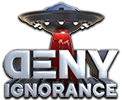04-07-2025, 01:24 PM
This post was last modified 04-07-2025, 01:33 PM by Chiefsmom. Edited 1 time in total.
WHile I can find the "spot the difference" images usually very quickly, I cannot for the life of me, see anything in these images.
I gave up, because I got frustrated.
I will try Encia's method.
Nope, still nothing, no matter the method.
I gave up, because I got frustrated.
I will try Encia's method.
Nope, still nothing, no matter the method.
Mr. Poops: Read a book, it's like broccoli for your brain. (Are you even still around?)
The earth provides everything we need. We thought we could do better. We were wrong.
The earth provides everything we need. We thought we could do better. We were wrong.







![[Image: do61c.jpg]](https://denyignorance.com/uploader/images/do61c.jpg)

![[Image: marvinmartian.gif]](https://denyignorance.com//images/addsmilies/marvinmartian.gif)
![[Image: cthulhu.gif]](https://denyignorance.com//images/addsmilies/cthulhu.gif)

![[Image: GoQZp3GWoAA1M1-.png]](https://denyignorance.com/uploader/images/GoQZp3GWoAA1M1-.png)





